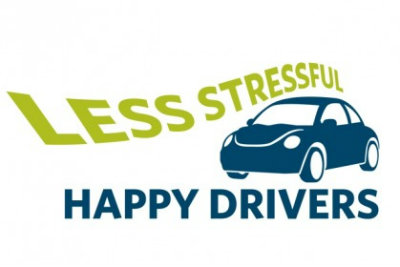It’s becoming an increasing concern for motorists about the new types of motorway, with thoughts springing to mind like: what are they? How do I use them? Will they positively impact our motorway system? Or what fines are you eligible for?
At CarCliq, we go through all your questions and aim to make you feel comfortable with smart motorways to overall obtain a smoother and safer driving experience.
At CarCliq, we go through all your questions and aim to make you feel comfortable with smart motorways to overall obtain a smoother and safer driving experience.
 What is a smart motorway?
What is a smart motorway?This is labelled as a section of the motorway which uses traffic management methods with the purpose of increasing capacity and reducing congestion in recognised busy areas. These methods involve using the hard shoulder as a running lane and using variable speed limits to control the flow of traffic.
Why were smart motorways created?
An idea from the Highways England, they suggested the development of smart motorways to manage traffic in a way that targets minimising environmental impact, cost and time to construct by avoiding the need to build additional lanes.
Types of smart motorways:
All lane running schemes
- This permanently removes the hard shoulder and converts it into a running lane.
- These will have overhead gantry signs that show the mandatory speed limit which is dependent on traffic conditions – if you find there is no speed limit listed, the national speed limit applies.
- If you see a “red X” sign, this means you must exit the lane as soon as possible. If you continue to travel in this lane, it is very dangerous to do so.
Controlled motorway
- These contain three or more lanes with variable speed limits, but also contain the hard shoulder (this is only used for emergency purposes).
- Variable speed limits are displayed on overhead gantry signs, the same applies like in the all lane running scheme, that if the speed limit isn’t listed, then the national speed limit is in place.
Dynamic hard shoulder running schemes
- The hard shoulder is opened as a running lane to traffic at busy periods to ease congestion.
- Within these stretches, a solid white line differentiates the hard shoulder from the normal lanes.
- There will be overhead gantry signs to display if whether the hard shoulder is open to traffic.
- If you see a “red X” sign, you must exit the lane promptly.
All lane running schemes
- This permanently removes the hard shoulder and converts it into a running lane.
- These will have overhead gantry signs that show the mandatory speed limit which is dependent on traffic conditions – if you find there is no speed limit listed, the national speed limit applies.
- If you see a “red X” sign, this means you must exit the lane as soon as possible. If you continue to travel in this lane, it is very dangerous to do so.
Controlled motorway
- These contain three or more lanes with variable speed limits, but also contain the hard shoulder (this is only used for emergency purposes).
- Variable speed limits are displayed on overhead gantry signs, the same applies like in the all lane running scheme, that if the speed limit isn’t listed, then the national speed limit is in place.
Dynamic hard shoulder running schemes
- The hard shoulder is opened as a running lane to traffic at busy periods to ease congestion.
- Within these stretches, a solid white line differentiates the hard shoulder from the normal lanes.
- There will be overhead gantry signs to display if whether the hard shoulder is open to traffic.
- If you see a “red X” sign, you must exit the lane promptly.
What are the positives of smart motorways?
Highways England collected data and gathered up these final statistics to prove smart motorways do positively impact our motorway systems:
Highways England collected data and gathered up these final statistics to prove smart motorways do positively impact our motorway systems:
- Journey reliability has improved by 22%.
- Personal injury accidents have been reduced by more than half.
- In common areas where accidents occur, severity has lowered dramatically, as it has resulted in zero fatalities and few seriously injured.
 In what ways can I be fined when travelling on a smart motorway?
In what ways can I be fined when travelling on a smart motorway?
- Speeding - Read our guide on speeding and the penalties you could face if you were caught.
- Red X fines - As you know by now, driving in the lane with a “red X” sign is dangerous and as it stands, there is manual enforcement of red x signs, but camera reinforcement is expected to be brought out in the summer period. So, once cameras have been implemented into the system, you will likely receive points and a fine, or an option to do a motorway awareness course.
To conclude, we suggest the following tips when driving on smart motorways:
- Never drive in a lane closed by a red “X”.
- Keep to the speed limit shown on the gantries.
- A solid white line indicates the hard shoulder.
- A broken white line will indicate a running lane.
- If you are experiencing technical difficulties with your car, make sure you exit the smart motorway as soon as possible to ensure the safety of yourself and others around you.
- Use the refuge areas for emergencies if you find there is no hard shoulder.
- Put your hazard lights on if you experience a breakdown and call your breakdown provider. If you don’t have one, get in contact with RescueMyCar today!